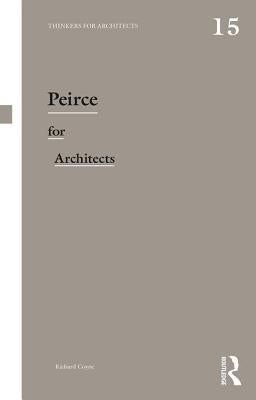Before you leave...
Take 20% off your first order
20% off
Enter the code below at checkout to get 20% off your first order
Discover summer reading lists for all ages & interests!
Find Your Next Read

Ideas gain legitimacy as they are put to some practical use. A study of Charles Sanders Peirce (1839-1914) supports this pragmatism as a way of thinking about truth and meaning. Architecture has a strong pragmatic strand, not least as we think of building users, architecture as a practice, the practical demands of building, and utility. After all, Vitruvius placed firmness and delight in the company of utilitas amongst his demands on architecture.
Peirce (pronounced 'purse') was a logician, and so many of his ideas are couched in terms of formal propositions and their limitations. His work appeals therefore to many architects grappling with the digital age, and references to his work cropped up in the Design Methods Movement that developed and grew from the 1950s. That movement sought to systematise the design process, contributing to the idea of the RIBA Plan of Work, computer-aided design, and various controversies about rendering the design process transparent and open to scrutiny.
Peirce's commitment to logic led him to investigate the basic elements of logical statements, notably the element of the sign. His best-known contribution to design revolves around his intricate theory of semiotics, the science of signs. The study of semiotics divided around the 1980s between advocates of Peirce's semiotics, and the broader, more politically charged field of structuralism. The latter has held sway in architectural discourse since the 1980s. Why this happened and what we gain by reviving a Peircean semiotics is the task of this book.
Richard Coyne is Professor of Architectural Computing in the Edinburgh School of Architecture and Landscape Architecture at the University of Edinburgh. He was formerly Head of the School of Arts, Culture and Environment. He inaugurated the MSc in Design and Digital Media, and is Programme Director of the MSc by Research in Digital Media and Culture. He researches and teaches in architectural theory, design theory and digital technologies, and is author of ten books that include Interpretation in Architecture: Design as a Way of Thinking (with Adrian Snodgrass, 2006), Derrida for Architects (2011), The Tuning of Place: Sociable Spaces and Pervasive Digital Media (2010) and Network Nature: The Place of Nature in the Digital Age (2018).
Thanks for subscribing!
This email has been registered!
Take 20% off your first order
Enter the code below at checkout to get 20% off your first order